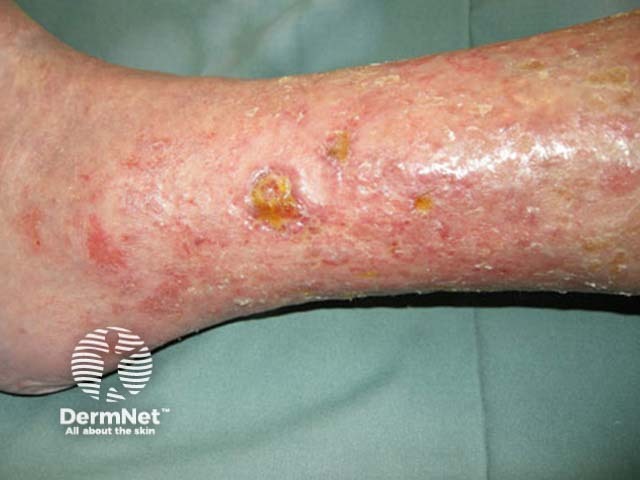Main menu
Common skin conditions

NEWS
Join DermNet PRO
Read more
Quick links
Eczema – 14 cases
Eczema or eczematous dermatitis is an inflammatory response of the epidermis and may be acute, subacute or chronic in nature. Acute dermatitis is characterised by erythema, oedema and blistering – histology reveals spongiosis and inflammatory cells. Chronic dermatitis is characterised by skin thickening and dryness – histology reveals acanthosis and parakeratosis without much inflammation.
Combinations and overlap of different type of eczema are common – for example, lichen simplex may complicate atopic eczema; irritant hand dermatitis predisposes to allergic contact dermatitis; asteatotic and venous eczema may lead to discoid eczema and autosensitisation; and pompholyx may become infected and spread more widely.
General management of eczema should include identifying and minimising causal or aggravating factors, reducing exposure to irritants, liberal use of emollients, and intermittent use of topical steroids of appropriate potency.
- Minimise washing; use soap substitutes
- Apply emollients after bathing and when the skin is dry or itchy
- Use potent topical steroid at first liberally for eczema flare (days to weeks).
For each of the fourteen cases, study the image(s) and then answer the questions. You can click on the image to view a larger version if required.
Each case should take approximately 2 minutes to complete. There is a list of suggested further reading material at the end of the quiz.
Case 12

What kind of eczema does this patient have?
Venous stasis eczema
Describe the features
Venous stasis eczema affects the lower legs. There may be a history of prior cellulitis or deep venous thrombosis. Venous eczema tends to be very chronic – management of deep venous disease may help, including vein surgery and graduated compression hosiery. Signs of venous disease include:
- Brawny pigmentation due to haemosiderin deposition
- Chronic oedema
- Venous ulceration
- Lipodermatosclerosis (circumferential hardened skin of ankle)
